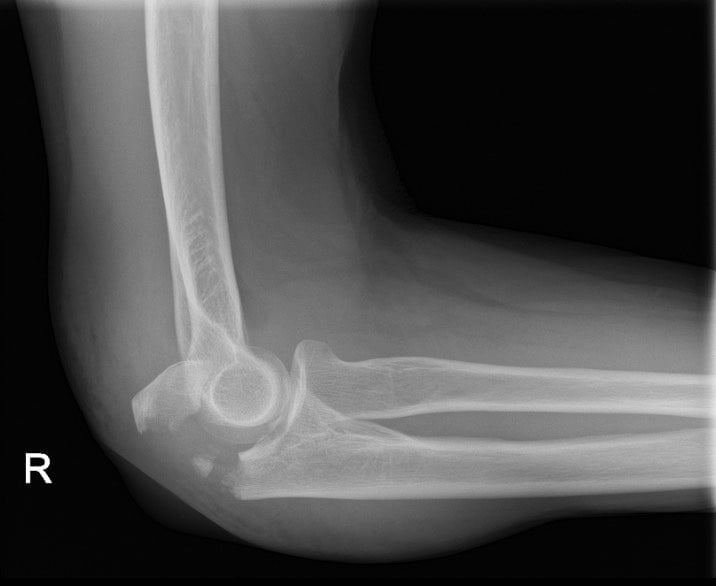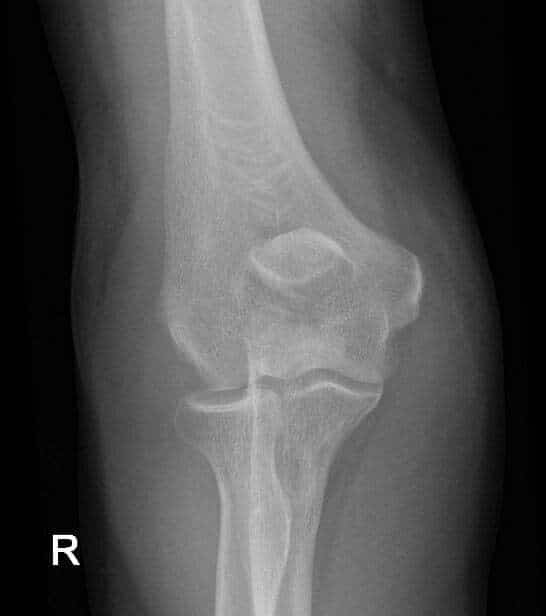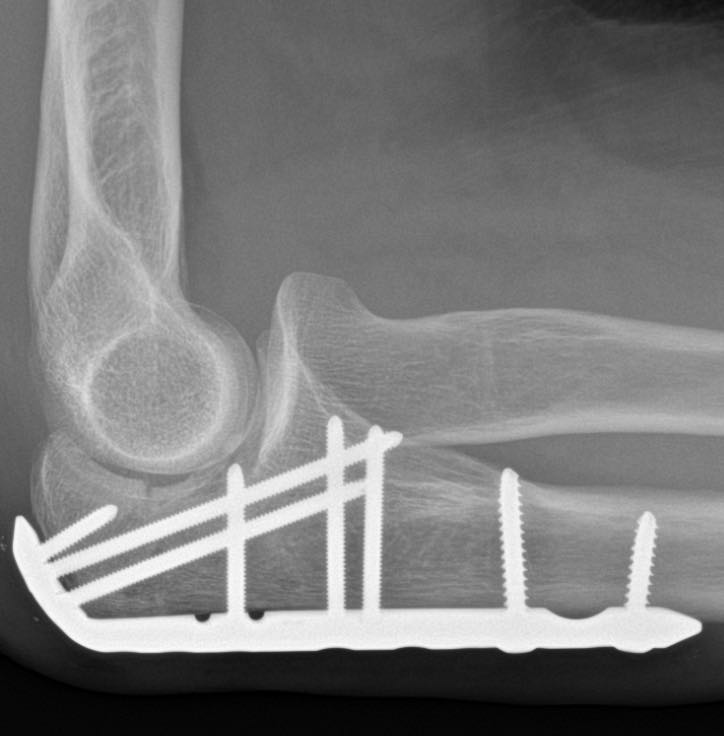Georgios Panagopoulos MD | Orthopaedic Surgeon

Table of contents
What is an olecranon fracture?
The elbow joint consists of 3 bones: the humerus (arm bone), ulna and radius (forearm bones). These bones are held together by multiple muscles, tendons and ligaments and work in unison in a hinge joint that bends your elbow, but also controls rotation of your forearm and hand. The upper pointy edge of the ulna near the elbow is called olecranon. An olecranon fracture is a break of the upper end of your ulna.
Causes
An olecranon fracture may occur as a result of a direct blow at the elbow (fall on the elbow, hit by an object) or indirectly after a fall on the outstretched hand.
Symptoms
Symptoms of an olecranon fracture include:
- Immediate pain
- Severe bruising and swelling of the elbow
- Inability to straighten or bend the arm
Diagnosis
The doctor will take a complete history and examine you thoroughly, taking care not to cause any further pain or discomfort. A simple x-ray of the elbow is usually enough for an accurate diagnosis. Your surgeon may request further imaging for preoperative planning, such as a CT scan, if deemed necessary.
Treatment
In general, olecranon fractures are displaced and require surgery. Surgery involves an incision at the back of your elbow. That way your surgeon can get to the fracture site and put all the pieces back together.
There are different means of fixation, i.e., pins with wires (tension band wiring), plate & screws (ORIF), or suture fixation. After surgery, a simple dressing is put in place, and you will be encouraged to start gentle mobilization to avoid elbow stiffness.




Το χειρουργείο γίνεται υπό γενική +/- περιοχική αναισθησία, με τομή στο πίσω μέρος του αγκώνα. Μετά το χειρουργείο, ενθαρρύνεται η άμεση κινητοποίηση του αγκώνα, προκειμένου να αποφευχθεί η δυσκαμψία του αγκώνα. Η φυσικοθεραπεία είναι εξαιρετικά σημαντική για την γρήγορη αποκατάσταση μετά από κάταγμα ωλεκράνου. Λόγω της υποδόριας θέσης του ωλεκράνου, πολλοί ασθενείς μπορεί να νιώθουν τα υλικά της οστεοσύνθεσης κάτω από το δέρμα. Σε αυτή την περίπτωση, είναι δυνατή η αφαίρεση των υλικών σε 2ο χρόνο, 6-9 μήνες μετά το αρχικό χειρουργείο. Σε ορισμένες περιπτώσεις, όπως ασθενείς με σχετικά απαρεκτόπιστα κατάγματα και μικρές λειτουργικές απαιτήσεις, ή παρουσία πολλαπλών συννοσηροτητών, είναι δυνατή η συντηρητική θεραπεία με ανάρτηση του άκρου και πρώιμη κινητοποίηση.
Sometimes, olecranon fractures are associated with more complex elbow injuries, like a radial head fracture, transolecranon fracture - dislocation, etc. In these cases, a more complex surgery is typically needed, in order to repair all structures involved.
Dr Panagopoulos has extensive experience in the treatment of elbow fractures, and will discuss with you all options during your visit in our office.
FAQs - Frequently Asked Questions
What's the olecranon?
The upper pointy edge of the ulna near the elbow is called olecranon.
What causes an olecranon fracture?
An olecranon fracture may occur as a result of a direct blow at the elbow (fall on the elbow, hit by an object) or indirectly after a fall on the outstretched hand.
What's the treatment?
In general, olecranon fractures are displaced and require surgery. Surgery involves an incision at the back of your elbow. That way your surgeon can get to the fracture site and put all the pieces back together.
Do I have to remove the metalwork at a later time?
Metalwork does not have to be removed, unless symptomatic.
Can surgery be done without plates or wires?
Selected fractures may be treated with suture-fixation.
Find us
Book an appointment with us today
